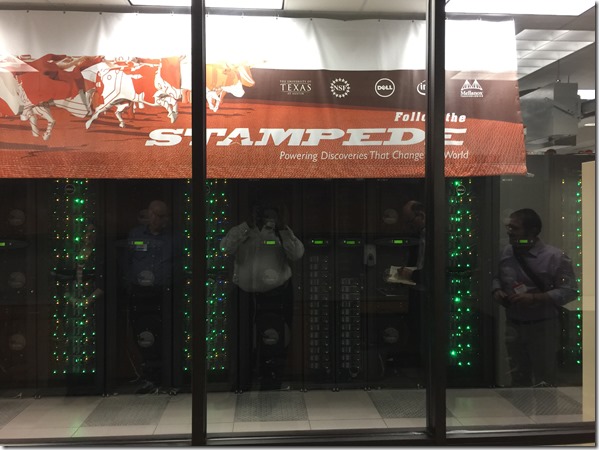Dell and Innovating: Supercomputing
While at the last Dell Innovation Days 2016, I had an opportunity to see Dell’s innovation at a customer’s solution firsthand, at the Texas Advanced Computing Center, or TACC.

Personally, it was a surprise.
As previously stated, Dell, to me, has always been a follower in terms of enterprise hardware innovations.
In fact, I really didn’t think Dell had innovated anything since their entre into laptops which brought new form factors and excellent prices to that segment about two decades ago.
In other words, I was an unBelieber!
This is my mea culpa: I was wrong.
For one thing, the supercomputing space requires not just the financial wherewithal to do things, but a lot of innovation.
And Dell has hit the ground with a proverbial ‘Big Bang’ in this space, placing several devices in the Supercomputer Top500 list, including TACC’s Stampede, which debuted on the list at #7 back in 2012.
At launch, TACC Stampede sported a plethora of Dell PowerEdge C8220 servers, each running Intel Xeon E5-2860 CPUs coupled with the Intel Xeon Phi coprocessor for a total of 204,900 cores and delivered 2.66 teraflops. The Xeon Phi coprocessors were soon upgraded to Intel Phi SE10P coprocessors which saw the core count jump to 462,462 and an almost doubling of performance to 5.168 teraflops, which momentarily lifted the supercomputer to number 6 on that list, a position it has since relinquished, holding at #12 in the latest (June 2016) listing.
Have no fear.
On June 2, the NSF, TACC and Dell announced Stampede II which will more than double the performance of Stampede when it is fully operational.
Stampede II will be a phased upgrade of Stampede, with a lot of forward-looking tech incorporated. These would include replacing the current CPUs with forthcoming Intel Xeons, the use of next-gen Xeon Phi ‘Knight’s Landing’ coprocessors, coupled with 3D XPoint NVRAM, and connected by Intel OmniPath architecture.
Phew!
In plain English, the current TACC Stampede supercomputer is built using technologies that Dell has built into its PowerEdge servers today, while the upcoming refresh will be created using innovations that Dell is in the process of building into its servers and hardware going forward.
In fact, Jim Ganthier, declared as much when he said:
“We are both excited for and proud to power TACC’s multiple Stampede Systems. TACC has been a great Dell customer and partner over the years, helping us to evolve our own portfolio as we continue to push the HPC industry forward,” said Ganthier. “Our Dell technologies at the core of the Stampede 2 supercomputing cluster will continue powering leading-edge research to both enable and advance science and society.”
This is a sector where every little performance gain that can be eked out matters a lot. It requires a level of sophistication and innovation to bring those gains about. If a 1% performance gain per core can be brought about, it becomes a virtual crescendo when replicated across the over 460,000 cores in Stampede. Or, for the current Big Kahuna of supercomputing, the Sunway TaihuLight, spread over 10 million cores.
For us mere mortals, it give me confidence that Dell is not just slapping [server] boxes together using an industry template gifted by Intel, but that Dell is actively investigating and innovating in products that will make Dell servers relevant again.
Making me a true believer, and a returning customer, in the process. (Never will I be a Belieber!)
Jim Ganthier is Vice President and General Manager, Engineered Solutions, High Performance Computing, and Cloud for Dell. His blog post celebrating the design win leading to the $30 million NSF grant for the creation of Stampede II is here.
© 2002 – 2016, John Obeto for Blackground Media Unlimited
Follow @johnobeto



